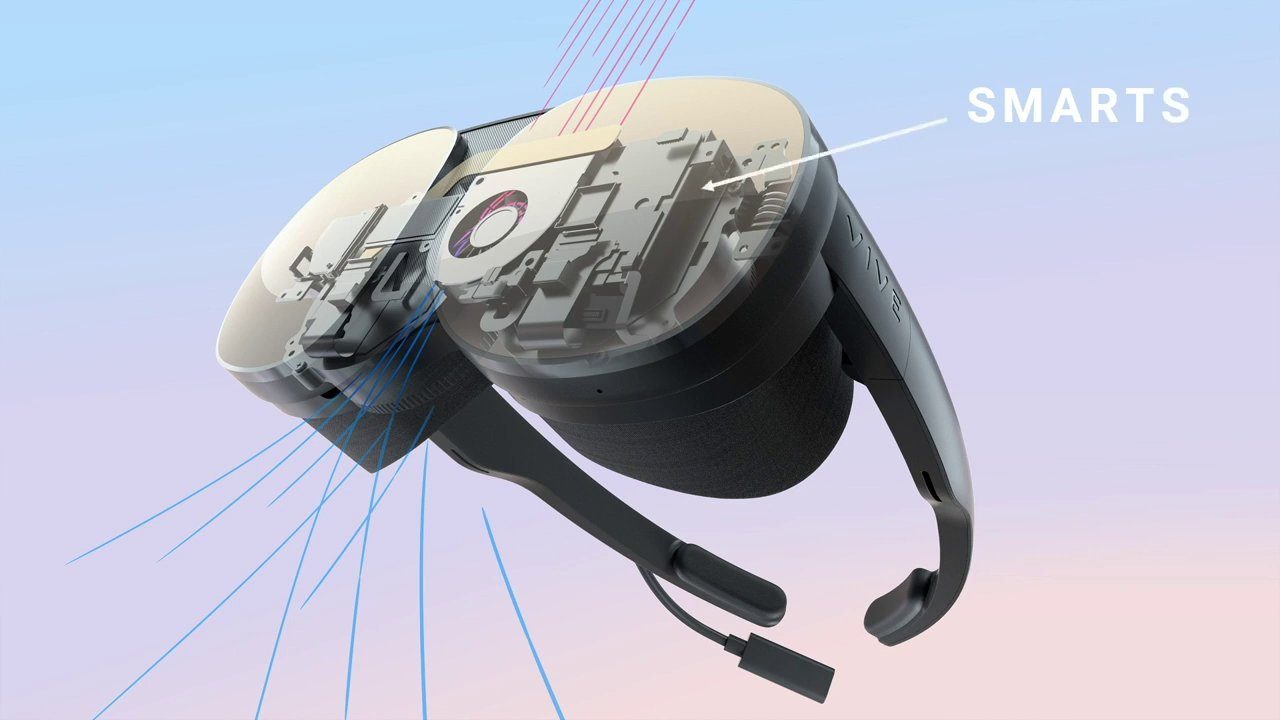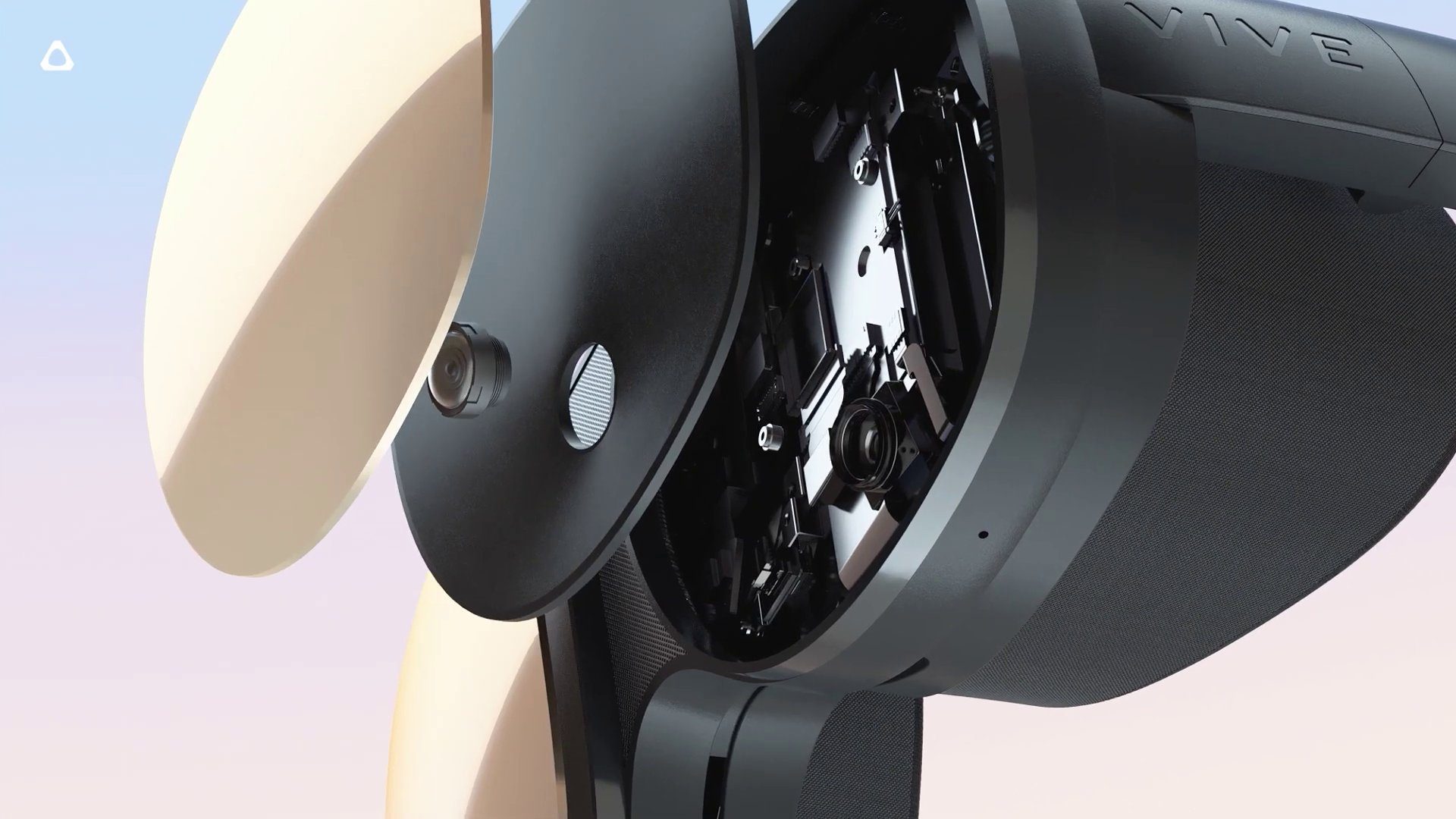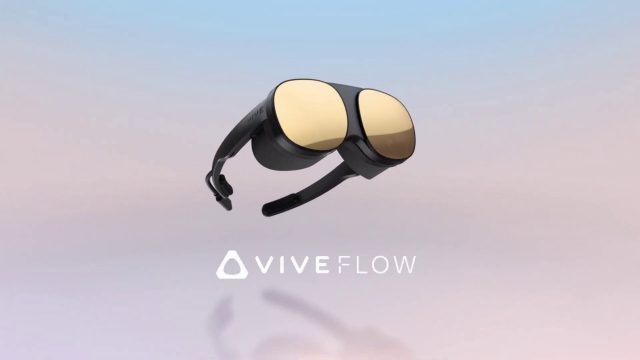An apparent leak in HTC’s marketing material has revealed images of the upcoming Vive Flow VR headset ahead of its October 14th unveiling. The headset, which is rumored to target consumers with a casual approach to media consumption, is reportedly priced at $500, and said to begin pre-orders on October 15th.
Serial leaker ‘evleaks’ released a trove of images last night which reveal much about Vive Flow, although not every answer to all of the burning questions. We haven’t substantiated the images below, although they appear to be authentic given how they match up with the progressive teases HTC has done over the past two weeks.
It appears Vive Flow has onboard processing as stipulated in earlier reports, making it fundamentally a standalone headset.


Here’s a look inside behind Vive Flow’s mirrored faceplate, which shows two optical sensors, ostensibly used for 6DOF positional tracking. If earlier reports can be believed, this may also include hand-tracking capabilities. No motion controller is seen in marketing info, and it was previously reported by Protocol that hand-tracking would be the headset’s main input method.


As a side note, that Protocol report also maintained Flow’s onboard chipset would be less powerful than the Qualcomm Snapdragon XR2 found in Oculus Quest 2 and Vive Focus 3.
While active cooling is present, from the images it’s not clear where onboard power is supposed to fit in the whole package. On the right temple arm of the headset you can see a cable trailing off, which appears to be a USB Type-C port, possibly for external power.
A top-down image showing off its snap-on facial interface reveals how thin the display and optics really are, something we’ve stipulated may be thanks to the inclusion of ‘pancake’ lenses like we saw on Pico’s VR glasses prototype at CES 2020. These typically shorten the distance between display and optics at some reduction of field of view.
The only look we get directly at the lenses reveals it has built-in diopter settings, so near-sighted people can use the close-fitting headset without glasses. Dual diopter dials appear to show up to a -6.0 diopter focusing power.
It’s still not clear what HTC is hiding with the cable. The marketing material shows phones that notably aren’t tethered to the headset physically, and are instead connected via Bluetooth.
Some of the mystery of input seems to be revealed in the image below, which maintains that a user’s phone can be used as a VR controller. This would likely be 3DOF input only.
In fact, a large set of lifestyle photos position Vive Flow as a consumer headset that’s focusing on casual media consumption, and possibly productivity as well.
With the tagline “Designed to fit into your life,” Vive Flow is definitely playing to its compact form-factor, positioning it as a good on-the-go solution for media consumption.
The thermos-style carrying case is said to come as a free gift when pre-ordered, which is said to start on October 15th, with shipments said to come in early November. The MSRP of $499 USD is also said to get you seven free VR apps and two months of a service called ‘Infinity Vista’, which sounds like it may be a tuned-down version of Viveport Infinity for the standalone device.
– – — – –
There’s still plenty to learn about Vive Flow. We’ll be watching on October 14th for HTC’s Vive Flow event to see what gaps they can fill in. We’re still waiting to hear about specs and what other capabilities it may have, which may better justify its $500 price tag to consumers.

